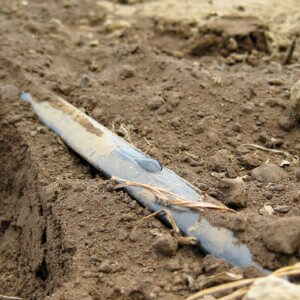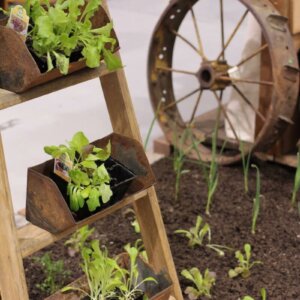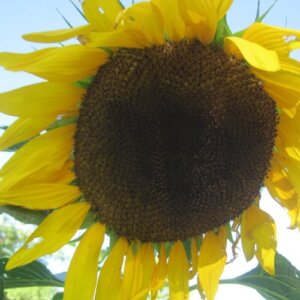Not all of us have the luxury of owning a plot of land to fulfill our gardening dreams. Some of us just have to face the fact that we are, for now, apartment-dwellers.
Not only do I live in an apartment with no garden space, but I happen to live in what feels like the one apartment in my complex that doesn’t have a south-facing window. My patio gets literally no direct sunlight. And if you’ve ever tried to grow a plant that really likes sun, without sun, the results are pretty disappointing, to say the least.
While we did purchase a fantastic light from Amazon that helped our orchid make it through the winter, there’s only so much room in a one-bedroom apartment for indoor plants.
So, what’s the most logical solution for a dark apartment that gets little direct sunlight? Choosing plants that thrive in low light!
What Are Low-Light Plants?
Most apartments, especially in the winter, are considered low-light areas. A room with north-facing windows or a room blocked by external influences, i.e. that bamboo that grew out of control, are examples of low-light environments.
Your interior design choices can also have an influence on the light of your room. A bookshelf or table, placed in a certain spot, can block light from reaching your plants.
Low-light plants, then, are plants that love this arrangement.
Why You Need Low-Light Plants
If you got the short-end of the south-facing window stick, or just don’t want to deal with a lot of plant maintenance, low-light plants are for you. You won’t have to worry about finding a nice, sunny spot for your plants if they don’t like it anyways! Many low-light plants also don’t require much time in the way of watering, either. And even better, they’re easy to grow, and who doesn’t love that?
Aside from the ease of growing and maintaining, indoor plants also have a reputation for cleaning the air and improving your overall health.
Types Of Low-Light Plants
Plants are so diverse in their shape and color, and low light plants are no exception! From long and viney to tall and dense, even with a low-light requirement, you still have a wide variety of plants to choose from. I promise you’ll be hitting up a local nursery after seeing these!
Spider Plant

I love the unique shape and color of spider plants. While most low-light indoor plants are a dark green color—if you’re taking care of them—the spider plant has a light green coloring with a thin white strip that is gorgeous!
Spider plants are most commonly grown in hanging planters, with their spirally leaves hanging out. Native to Southern Africa, these low-light plants prefer lots of humidity and well-drained soil. While they can be grown indoors just about anywhere, if they’re going to be outside, they will do well in Zones 9-11.
Put one of these guys in a macrame planter, and you’ll be transported back to the ’70s. Shag carpet not included.
Cast-Iron Plant
https://www.instagram.com/p/BhLjO75hM1G/?tagged=castironplant
The Aspidistra elatior, more commonly known as a cast-iron plant, is native to Japan and Taiwan. An incredibly hardy indoor plant, the cast iron features dark green, heavy leaves. Needing little to no maintenance, these are drought-tolerant and thrive in the shade—perfect!
Gardening Know How mentions that while cast-iron plants can put up with a decent amount of neglect, they will thrive with an annual feeding of organic fertilizer. While fertilizer certainly isn’t necessary, it can give it a little boost if you feel that it needs it.
Air Plants

Now if you’re anything like me and have a heck of a time keeping any plant alive, air plants are definitely for you! They’re a perfect addition to your desk or look especially good in terrariums. Another plant that doesn’t mind a bit of neglect, air plants will greatly appreciate a soak in some water every once in a while.
While I don’t have an exact science for this, generally, I toss my air plant into a cup of room-temperature water for a day or so to let it soak. I do this once a month or just whenever it’s looking a bit dry.
Peperomia
https://www.instagram.com/p/BhZmRPwFo5y/?tagged=peperomia
Available in a wide variety of colors, sizes, and shapes, you’re sure to find a peperomia plant that suits your tastes. These plants do a good job of adapting to whatever light environment they’re put in. In fact, too much light can actually scorch the leaves.
As for watering, peperomias are prone to root rot, so only give them a drink when the soil is looking dried up. Because they are smaller, slow-growing plants, they don’t need anything in the way of fertilizer feeding. And as for humidity, while some varieties of peperomias require high levels of humidity, many don’t. Check the label and consult your nursery expert—they will be able to provide you with exactly what that specific plant needs in terms of humidity.
Snake Plant
https://www.instagram.com/p/BhPE3cBALet/?tagged=snakeplant
Hailed as one of the easiest to maintain indoor plants, snake plants have gained a special place in many gardeners’ hearts. Not to mention their shape and texture are unique, and one could even argue that snake plants look a bit like a modern art piece.
There are around 70 varieties of snake plants, with all sorts of color combinations. Not only are they the ideal low-light plant, but they’re drought-tolerant and have few issues with pests.
In fact, snake plants can thrive with a lack of watering. I’ve had my snake plant for a little over a month, and I’ve only watered it once. I’ve been keeping my eye on any changes in the leaves, but it’s really holding up!
Devil’s Ivy

Our devil’s ivy never ceases to amaze me. We propagated a piece from a family member, and what started out as a little clipping has turned into a thriving plant with almost six leaves now! And what has really impressed me is that all we’ve done is left it in a cup of water, replacing it with fresh water once a week.
I can attest to the fact that these plants are great for beginners, and they will grow wherever you want them to.
Ferns
https://www.instagram.com/p/BhhVRvCnVA4/?tagged=fern
We tried to propagate some ferns, and while it was way too cold for them to be outside, I was surprised by just how well their roots established without us really doing much to the plant. Ferns are one of those plants that just seem to grow everywhere, so keeping them container-bound is a good idea.
Ferns prefer low light—in fact, they need it. Too much sunlight will kill them. Give them enough water, and they will brighten up your room for years to come. And the way they float out of hanging plants is so pretty, too!
A Note On Growing Low-Light Plants
As with most things in life, gardening and growing plants is all about experimenting and trial and error. Especially when you have less than optimal conditions. Give some of these plants a shot, and as a nursery employee once told me, listen to your plants! If they are showing signs of overwatering or underwatering, or signs of too much or too little light, adjust accordingly!
As a rule of thumb, low-light plants prefer little water, little light, and just a bit of attention. So if you are noticing wilting leaves or dried ends, water it less and move it a bit further from the window.
I’ve learned to not get discouraged when my plants are having problems. Instead, I just change what I’m doing and see how they react. Many plants, especially the ones on this list, are incredibly resilient and can handle a newbie gardener!









































I have looked for articles on low light plants. Thank you! I checked our florist, they had peace plants and phyledendrons and large ones. Where to find these plants in winter?